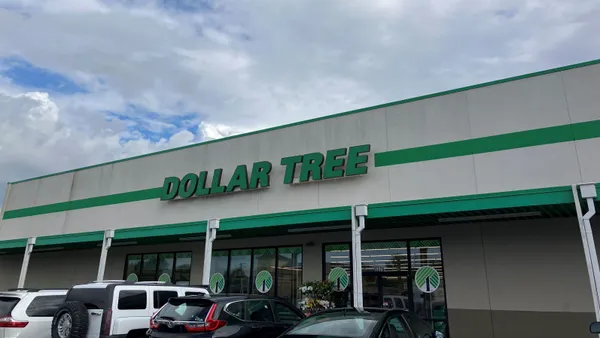Balloon manufacturer Anagram filed for bankruptcy Wednesday amid uncertainty around its supply agreement with its corporate owner, Party City.
The retailer is by far the supplier’s largest customer. Party City accounts for 38% of Anagram’s sales, the latter’s Chief Restructuring Officer Adrian Frankum, who was appointed in April, said in court papers. The balloon maker also sells to distributors, value retailers such as dollar stores and mass merchants including Walmart.
Along with supplying Party City generally with balloon products, the retailer and Anagram share intellectual property licenses. In 2022, Anagram sales based on Party City-owned IP licenses amounted to $25 million for the balloon maker.
Party City filed for Chapter 11 earlier this year, though it didn’t include the Anagram subsidiaries. While its restructuring plan has been approved by a federal bankruptcy judge, its case is still open.
In May, Party City moved to nix its supply contract with Anagram through the Chapter 11 process. Although the motion is still pending in Party City’s case, Frankum said that the move to reject “has put additional pressure on [Anagram’s] operations” and its own restructuring negotiations.
Under the original contract, Party City would have to pay $40 million in termination fees if it backed out of the supply agreement, which dates back to 2020. But those fees owed to Anagram would likely receive minimal repayment in the bankruptcy process, according to Frankum.
In Anagram’s press release announcing its bankruptcy, the company said it “continues to support [Party City] as a valued retail partner.”
Founded originally in 1978 by Garry Kieves, the Minnesota-based Anagram became a subsidiary of Party City through a series of acquisitions beginning in the 1990s. The lion’s share of Anagram’s products today are designed as helium balloons, a business that became financially vulnerable amid helium shortages of recent years.
The company has a 110,000-square-foot manufacturing and printing facility at its headquarters in Eden Prairie, Minnesota, and a 391,000-square-foot distribution facility in Bloomington, Minnesota. All told, it has about 350 employees at its facilities.
In recent years, Anagram has performed well as a unit of Party City even as its retailer parent company contended with its debt load, a changing market and the pandemic. In 2021, Anagram’s revenue went through considerable growth while its operating profit more than tripled.
When Party City left its Anagram subsidiaries out of its bankruptcy filing, analysts saw it as a signal that Angram would become an independent company. And that is what Anagram is trying to do in part through its own Chapter 11, which would turn ownership over to bondholders and lead to a separation from Party City.
Along with trying to set up company infrastructure to help establish Anagram as a stand-alone company, management has also been assessing its portfolio of customer and vendor contracts “to determine whether new standalone contracts will be needed” after a separation, Frankum said.
Anagram filed for bankruptcy with a formal bid by bondholders that would set the baseline for a proposed auction for the company.














